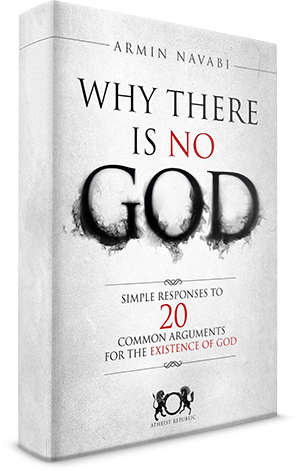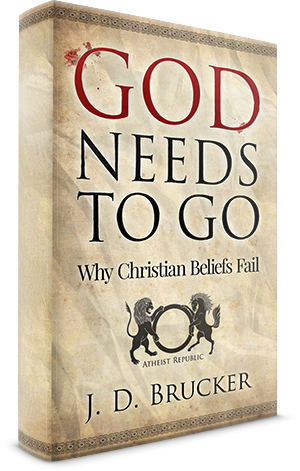
If it is difficult to understand Hinduism, it is also difficult to explain it to anyone. To attempt a “Hinduism for Dummies” type project is itself an idiotic enterprise. The following questions are slightly uncommon in phrasing, meant to make you feel like asking more questions and not fewer. The answers are not from a scholarly authority on the subject but just someone who has lived, experienced and studied the ethos of Hinduism first-hand – so dispute and contradict me as you please.
1. What does “Hinduism” mean?
A: Just as Christianity is the religion of Christ, so is Hinduism a religion of... what?
The definition opens the door to the true difficulty in understanding Hinduism, because it simply identifies as an ism of “Hindu,” which is a term derived from “Sindhu,” the Sanskrit name for the Indus River. The term compounds the various religious and philosophical systems practiced in the land of the Indus River, India – and today, the broader Indian subcontinent, comprising of India, Nepal, Pakistan, Bangladesh and Sri Lanka. Indeed, one of the Indian subcontinent and the Republic of India's historically popular colloquial names is Hindustan – Land of the Hindus. So this religion, if there is indeed only one, is named on a geographical basis. Nor has Indian culture traditionally observed strict boundaries between religion, philosophy, science or art, all of whom are often entwined.
Many of its adherents prefer the term “Sanathan Dharma” - the Universal religion, which doesn't exactly make things clearer. Many Hindus will tell you they consider Hinduism not as a religion, but as a “way of life” - a cultural ethos, or another term for Indian civilization.
2. So then what is “Hinduism” exactly?
A: Umm... a lot of things, to be frank. Going by the traditional definition set by geography, the mantle of “Hinduism” includes more than five schools of philosophy that don't believe in a creator-god, believe in a creator but not a supervising god, are agnostic or indeed, completely atheistic and materialistic – such as the Samkhya and Carvaka schools. The actual theism and belief in a creating, supervising and destroying godhead is the school of Vedanta, based on the four Vedas.
This broad, traditional definition of “Hinduism” is the source of serious political disputes as well. Religions that arose specifically rejecting the Vedas, such as Jainism, Buddhism and Sikhism – may technically qualify as being part of Hinduism because they were born in the Indian subcontinent. This point is laboriously insisted upon by Hindu nationalists, who ask Jains, Buddhists and Sikhs to call themselves Hindu. Yet each community has developed distinctive identities, and while there are no actual conflicts or issues between these communities (inter-marriage, worship at common temples and social interaction are common), many of them don't like the idea of submerging their religious identity into a larger pool.
3. What is the holy text of Hinduism? Who are the gods of Hinduism, and what are the clergy like?
A: According to the Supreme Court of India, a follower of the Hindu religion is identified by his adherence to the four Vedas – Rig, Atharva, Sama and Yajur. However, this legalistic interpretation has been challenged as inaccurate, as Hinduism does not emphasize one source, one book or set, one prophet, one savior or even one god. Moreover, the Vedas are “divinely inspired,” but are not the “word of God.”
Hinduism has long evolved beyond the Vedic era. The religious practices of most Hindus are significantly different from Vedic teachings, which talk about a litany of deities who most Hindus do not worship anymore. The great Vedic deity of Indra is merely a figurehead ruler of Hindu heaven (Swarga); he is susceptible to sin, chastised by defeats at the hands of demons, and has to be rescued by the actual Supreme Lord, Vishnu. A lot of the stories involving Indra, the Lord of Thunder and Rain, actually bear a striking resemblance to the tales of Zeus and Jupiter.
The popular Hindu godhead are the trinity of Brahma (the Creator), Vishnu (the Preserver) and Shiva (the Destroyer). Close to half of Hindus consider Vishnu to be the Supreme God and the source spirit of Brahma and Shiva, who are personalities of Vishnu – these Hindus call themselves Vaishnavas. A significant segment of Hindus believe the same thing about Shiva, and are called Shaivaites. Yet another significant branch are the believers in Shakti, a female power exemplified by Shiva's wife, Uma that is the source of both Shiva and Vishnu.
Of course, the lay Hindu worships many gods who address specific needs. Villages have their own unique deities. Indeed, most regions and even districts have culturally distinctive forms of Hinduism. If you've heard of many thousands of Hindus gods, its quite true. The question arises – how do Hindus reconcile faith and a common identity in such a vast godhead? The popular philosophical explanation is that they are all forms of Vishnu, or Shiva. This approach is called Advaita – the One God has many forms. God as an idol or in the shape of an animal or man is not inferior to a formless, monotheistic deity.
For most Hindus, the Vedas are merely the source of mantras chanted in a mind-numbing fashion by Brahmin priests at various ceremonies, called pujas. Modern Hindu religious and philosophical attitudes are shaped by later texts such as the Bhagavad Gita, a poem that is part of the larger epic poem, the Mahabharata. The Upanishads are a source of religious philosophy, and the Puranas detail the many mythical-yet-fantastic adventures of Hindu deities. Whether one approaches them as literally true or simply as stories – all are quite fascinating reads.
Hinduism does not have a centrally-organized clerical organization comparable to the Roman Catholic Church. While the eighth century Hindu leader Adi Shankaracharya established four Shankaracharyas assigned by region to lead Hindu society, today their influence is restricted to local sects professing loyalty. While smaller sects led by saints and gurus have central leaderships, lay Hinduism is organized at a very local level, with Hindus turning to their neighborhood and village priests, and priests who specifically serve certain castes and sub-castes. With rare exceptions from reformist movements attempting to integrate castes, priests are only derived from the Brahmin caste.
4. What do Hindus believe?
A: The mother of all questions – a lot of things, but some doctrines common to most Hindus include:
A. Karma – your deeds. A virtuous being that does good deeds, upholds morality and does its duty towards society, religion and humanity will ascend the hierarchy of life – the lowest being insects and animals, rising to man, then subdivided into castes. The most virtuous of the highest caste can find Moksha, or liberation from the cycle of rebirth and enter Swarga, or Heaven.
B. Reincarnation – if you're a good animal (whatever that is), you will earn higher birth, perhaps into humankind. If you are a rotten human being – say like Hitler or Stalin – you will be reborn as an insect.
C. Time – from creation to the end of the universe, Time is divided into eras called yuga – the first Krita-yuga or Satya-yuga being the age where life was perfect; truth, justice and peace prevailed, and there was no human suffering. The situation deteriorates over the next two yugas, Treta and Dwapara, before we enter our times in the Kali-yuga, where immorality, untruth and human suffering are maximized (Quelle surprise). No exact measurement of time really exists – some interpret the yugas to have lasted tens of millions of years, with the lives of human beings lasting hundreds of years in the earlier ages of piety. A change from those who say the world is only a few thousand years old, but just as unscientific and no better, as this view still considers life as only getting worse.
D. Heaven and Hell – Swarga is heaven and Naraka is a term for a hellish environment. A key distinction from Christianity and Islam is that neither is a permanent destination – if your conduct in heaven is unbecoming, you will be “sent down” to earth to re-enter the cycle of birth, and you have to earn religious merit all over again by being a good person. Hell is like jail – you serve a definite sentence set for specific crimes; all human beings will have to spend at least a small token of time in hell for any little sin, lie or fib they committed. However, once time is served, you can be reborn as a higher being or enter heaven.
E. Avatars – incarnations of the Supreme Lord to save humanity; there are legends about the incarnations of Shiva in such a role, but Vishnu's avatars are the most popular. The first avatar of Vishnu is as Matsya, or a fish – he arrived to warn Manu of an impending flood that would wipe out all sinful human beings, and inspired Manu to construct a large ship to rescue humans and other living beings. Sounds familiar? Yes, this is the Hindu flood story, developed distinctly from the story of Noah's ark. The avatars arrive to rescue humanity or the most virtuous individuals of the time from evil. The most popular incarnations are those of Rama, the prince of Ayodhya – the most virtuous king and the ideal man; the epic poem Ramayana is the story of his life – and Krishna, the mentor and guide of the virtuous Pandava brothers, who struggle against their evil Kaurava cousins to regain their rightful kingdom in the Mahabharata.
Hindu eschatology does predict a final incarnation – Kalki. He will arrive at the end of the Kali-yuga, before the entire universe is destroyed, to save the righteous and virtuous from the onslaught of evil.
F. Varna – known as caste, this is the most controversial aspect of Hinduism that has nevertheless spread even beyond Hindu society. The Varnashrama doctrine divides humanity into four classes by duty or occupation. The Brahmins are the highest in the order, entitled to be priests and scholars, whose meditations and performance of religious duties ensure the relative piety of the world. The Kshatriyas, or warriors and princes, who rule states and fight wars. The Vaishyas are entitled to be traders and business people, and the Shudras are laborers and farmers. Reformers, apologists and other defenders of Hinduism maintain these divisions are just occupational, describing how human society subdivides itself and that all castes are actually equal.
The reality is different. For thousands of years, caste was entrenched by birth, and castes behave as a result as tribal communities. With the growth of the population, they have divided themselves into thousands of sub-castes that do not exist in Hindu scripture. However, Hindu scripture considers Brahmins and Kshatriyas to indeed be of “high birth” - in the cycle of life, they are closest to moksha.
While it doesn't take much to see how the Brahmins and Kshatriyas loved to control society like this, the system degenerated into sheer cruelty. Socializing between castes was strictly prohibited; inter-marriage and inter-dining with “lower castes” unthinkable. Large populations of Indians were considered too “unclean” to even count within the four-tiered order of life – they were treated as “untouchables,” quite literally. They lived away from the rest of the town, village or city, and could not walk on the same side of the road as the other castes, nor drink water from the same well. By profession, they were butchers, and handled leather, animal skins and hides, collected and disposed of refuse and human waste – essential, yet “unclean” professions to the higher castes.
Untouchability was outlawed by the British government in the nineteenth century, yet its practice was not largely ended until a national reform movement arose under leaders such as “Mahatma” Jyotirao Phule, “Mahatma” Mohandas Gandhi and Dr. Bhimrao Ramji Ambedkar. Hindu religious and political organizations committed themselves to ending the practice of untouchability, and eradicating it became an urgent priority of the Indian independence movement. The rise of a modern industrial economy and metropolitan cities further weakened this sinister institution. Even so, caste barriers and rivalries remain strong in many parts of India, and humiliating treatment is often meted out to those considered as “low caste.”
The caste system has morphed beyond its religious constructs into ethnic and socio-economic classes. It has long controlled who you will be allowed to marry, who will most likely be your friends. Even generally “liberal” Hindus like to match their son or daughter with a mate of the same socio-economic class, who worry about preserving their status in society as you do, and are more likely to stick together and consider each other as belonging to the same nath, lineage or community. Having enduring thousands of years, the caste system of stratification is not going away anytime soon..
5. What's this about atheism being a part of Hinduism?
A: Nobel Prize-winning economist Amartya Sen said:
“In some ways people had got used to the idea that India was spiritual and religion-oriented. That gave a leg up to the religious interpretation of India, despite the fact that Sanskrit had a larger atheistic literature than what exists in any other classical language. Madhava Acharya, the remarkable 14th century philosopher, wrote this rather great book called Sarvadarshansamgraha, which discussed all the religious schools of thought within the Hindu structure. The first chapter is "Atheism" – a very strong presentation of the argument in favor of atheism and materialism.”
Thanks to the broad definition of Hinduism and the diversity of the schools of belief and philosophy, you can still be a Hindu if you believe in some things and not others, reject some and not others, or even rejecting everything completely. I have known many Hindus of my generation who do not believe in any aspect of Hindu theology, can barely tolerate the ritualism, caste-ism and superstition of their parents, but still consider themselves “Hindu atheists” or “culturally Hindus.”
Photo Credit: Flickr/ramnaganat - Natesh Ramasamy
Continue Reading Part 2 by clicking here.




























